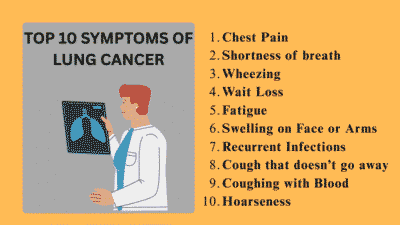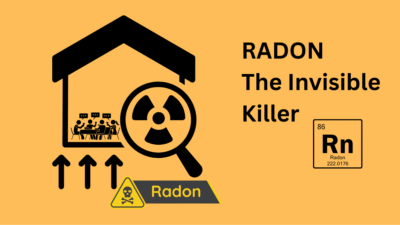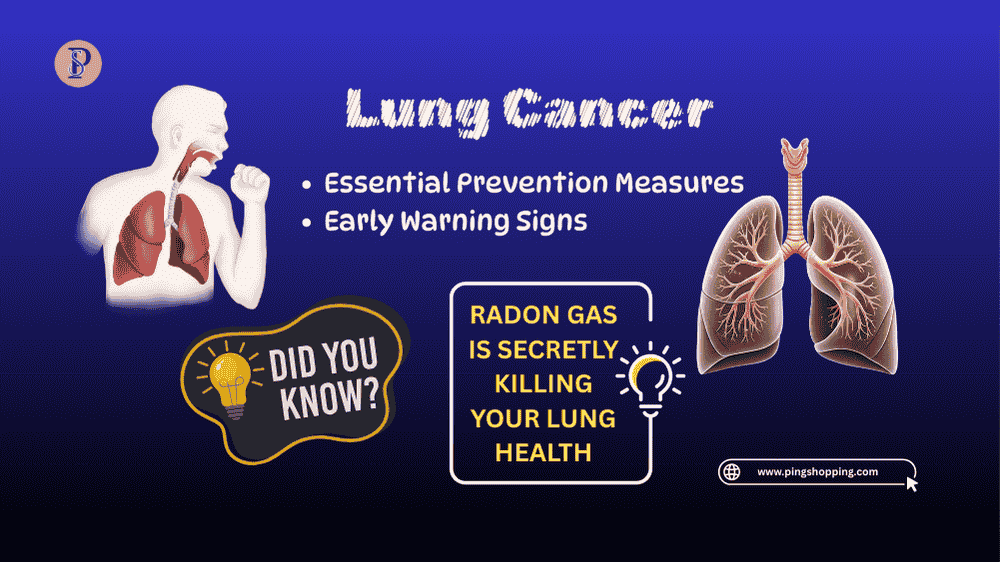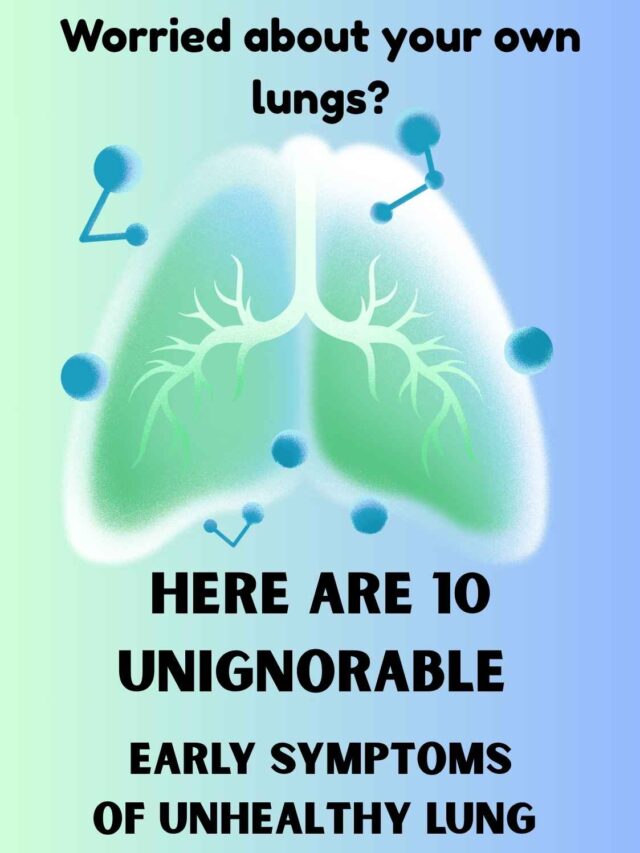The Most Up-to-Date Information on Lung Cancer, How to Avoid It, and Warning Signs The years 2024 and 2025
More people die from lung cancer each year than from breast, colon, and prostate cancers put together, making it the top cancer killer in the US. On the bright side, there has been a 26% improvement in the five-year survival rate to 28.4% nationally in the last five years, and many instances can be prevented or effectively treated with the right preventative measures and early detection.
The following symptoms may indicate the presence of lung cancer:

Blood in the mucus, chest discomfort, difficulty breathing, hoarseness, unexplained weight loss, and recurrent respiratory infections. New information shows both worrying tendencies and encouraging advances. About 124,730 people will lose their lives to lung cancer in 2025, out of an anticipated 226,650 new cases. There has been a notable change in the disease’s demographics, with more women than men being diagnosed (115,970 versus 110,680 cases).
Changes in the Population:
Women and younger generations are showing signs of a new trend. Incidence rates for lung cancer in women under 65 years old are 15.7 per 100,000 in 2021, more than double the rate for males under 65 years old, and for women under 50 years old, the rate is 82% higher.
Acquiring Knowledge about the Causes of Lung Cancer
Principal Danger Factors The Power Is Under Your Hands
Cigarette Smoking—The Principal Reason
Eighty to ninety percent of lung cancer fatalities in the US are caused by smoking. Longer smoking duration and larger daily consumption greatly increase risk, as the danger is dose-dependent. Cigarettes of any kind, including light, menthol, and regular, pose the same health risks.
The Unseen Threat of Secondhand Smoke
The risk of developing lung cancer increases by 25-28% even for people who never smoke, making secondhand smoke the third leading cause of lung cancer in the United States. Everyone in close contact with smokers is vulnerable to this unseen danger.
Exposure to Radon—The Invisible Killer
When it comes to lung cancer, radon gas ranks second nationwide and first when it comes to non-smokers. Exposure to radon, a naturally occurring radioactive gas, can build up in dwellings and is responsible for between 10–20% of lung cancer occurrences globally.

Dangers in the Workplace and the Environment
Exposure to Chemicals and Air Pollution
The yearly death toll from lung cancer is 1-2%, with 1-2% attributable to urban air pollution. Asbestos exposure increases risk by 12-24%, while arsenic, nickel, and chromium exposure all substantially increase risk in the workplace.
Background of Medical Conditions
This risk is two to three times higher for people who suffer from chronic obstructive pulmonary disease (COPD), emphysema, or chronic bronchitis. Past tuberculosis increases risk by 48-76%, while a history of pneumonia increases risk by 30-57%.
First Line of defence: Comprehensive prevention strategies
1. Quit smoking entirely:
The best way to avoid smoking is to never start or quit smoking quickly. The risk of lung cancer drops 30–60% after 10 years of quitting, but it never goes back to the same level as a never-smoker.
Why Giving Up Is Beneficial:
- Rapid mitigation of carcinogenic chemical exposure
- Enhanced lung function and progressive healing
- Enhanced protection against early malignancies
- If lung cancer does arise, treatment results will be improved.
2. Testing for Radon and Its Reduction
No matter where you live, you should always get your home tested for radon. If the levels above 4 picocuries per litre (150 Bq/m³), it is advised to seek expert mitigation services; simple test kits can be found at hardware stores.
Advantages of Radon Reduction:
- Can avert 35% to 40% of lung cancer cases caused by radon
- When taken into consideration during building, they are the most economical.
- Important for all residences, but especially those on lower levels or without lifts
3. Taking Precautions in the Workplace
Thorough compliance with occupational safety regulations when handling substances known to cause cancer. Proper ventilation, protective gear, and routine health monitoring are all part of this for workers who are at risk.
Remedial Measures: Early Identification
For people between the ages of 50 and 80, the American Cancer Society and the United States Preventive Services Task Force now advise yearly low-dose CT (LDCT) screening if:
- Been a smoker for 20 years or more
- Are now smokers or have quit in the last fifteen years?
- Have a decent prognosis and should live a long time
Using Screening:
- Can identify cancer in its earliest, most curable stages
- When illness is contained to a specific area, the survival rate is much higher.
- minimal radiation exposure, fast, and non-invasive
Airway Signs and Symptoms:
- Cough that doesn’t go away after three weeks or gets worse with time
- Aspirating blood or sputum with a rusty hue
- Feeling out of breath even when doing everyday tasks
- Chest discomfort that gets worse when you laugh, cough, or breathe deeply
- Experiencing wheezing or difficulty breathing suddenly
Generalised Illnesses:
- Loss of weight that does not correspond to a diet
- Ongoing lethargy or exhaustion
- Decreased hunger
- Insufficiency of voice for longer than two weeks
- Chronic respiratory illnesses such as pneumonia or bronchitis
Indicators of Advanced Illness:
Extra symptoms may manifest when lung cancer has progressed to other organs: Bone discomfort, especially in the hips and back. Alterations to the nervous system (migraines, numbness, dizziness). Swelling of the lymph nodes, face, or neck. Hepatic involvement causes jaundice, which is characterised by yellowing of the skin and eyes.
Important Step: People with preexisting conditions or who have experienced any of these symptoms for longer than two weeks should see a doctor very away. Effects of Early Detection, The sad truth is that lung cancer is still often detected at an advanced stage in nearly half of cases. This highlights the paramount significance of taking part in screenings, reducing risks, and preventing.
Action Plan: Quick Measures (This Week)
- Take stock of your smoking habits; if you smoke, you should start making plans to quit right away.
- Be sure to conduct a radon test on your property – Get tested by a professional or buy a test kit.
- Consider the family history — Talk to your loved ones and doctors about the possibility of developing lung cancer.
- Evaluate potential hazards on the job and check that all workplace safety procedures are followed
Objectives for the Medium-Term (the Following Three Months)
- Finally kick the habit, with help from a trained expert if necessary
- If you are eligible, schedule a lung screening.
- If levels are high enough, radon mitigation should be done.
- Optimal health is achieved by a combination of a balanced diet, frequent exercise, and routine medical checkups.
Permanent Dedication (Continuous):
- Keep your house and place of employment smoke-free.
- Keeping a close eye on respiratory symptoms as part of routine health monitoring
- Keep yourself updated on the latest research into treatments and preventative methods.
How to Proceed ?
Workers may help bring the lung cancer rate down even further by giving up tobacco, getting their houses tested for radon, adhering to safety standards at work, and taking part in screening programs. Making decisions that are good for your lungs is something you can do every day. Take preventative measures today to avoid a lung cancer diagnosis tomorrow. These measures can include stopping smoking, testing your house for radon, or scheduling suggested screening.




















